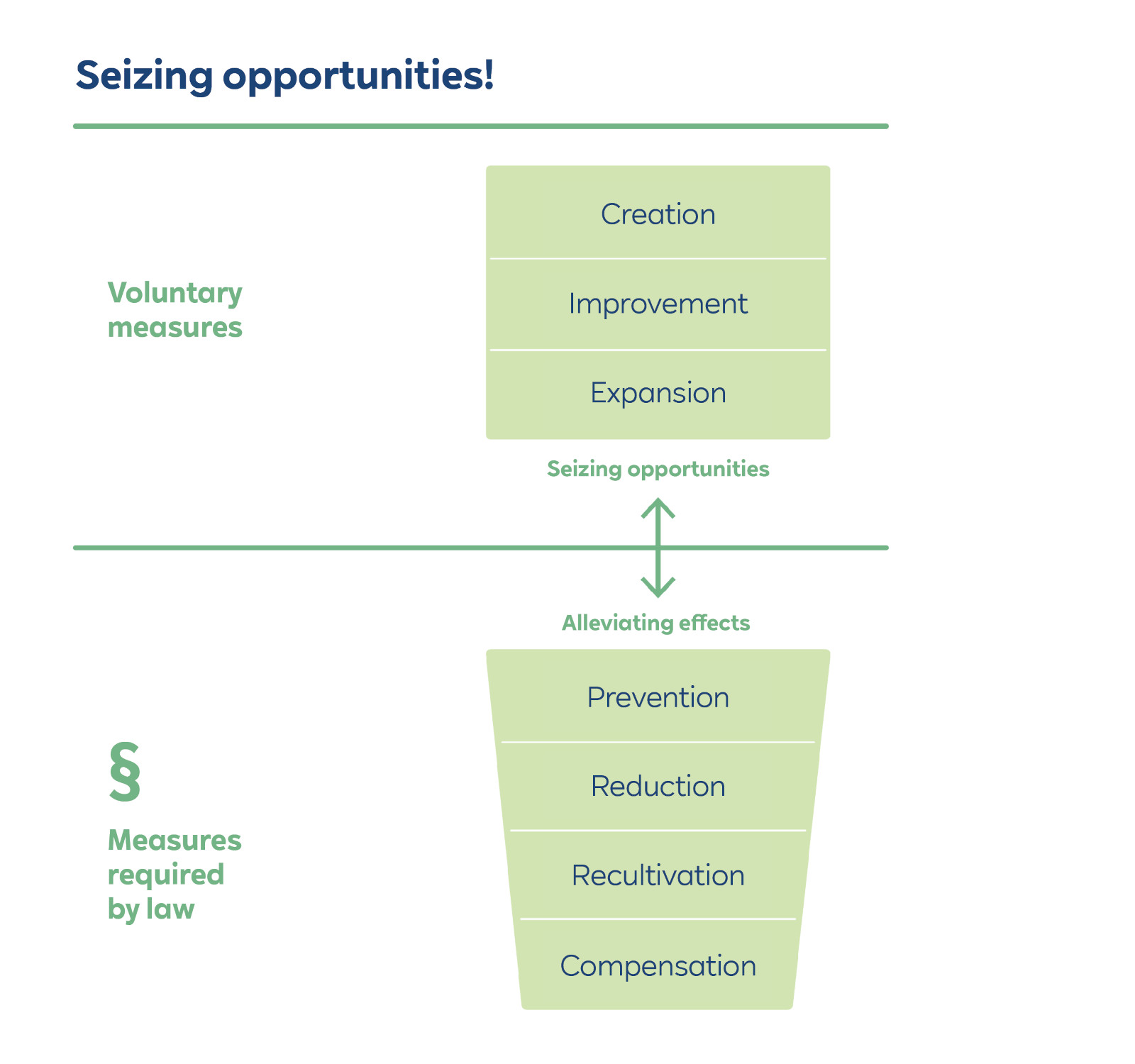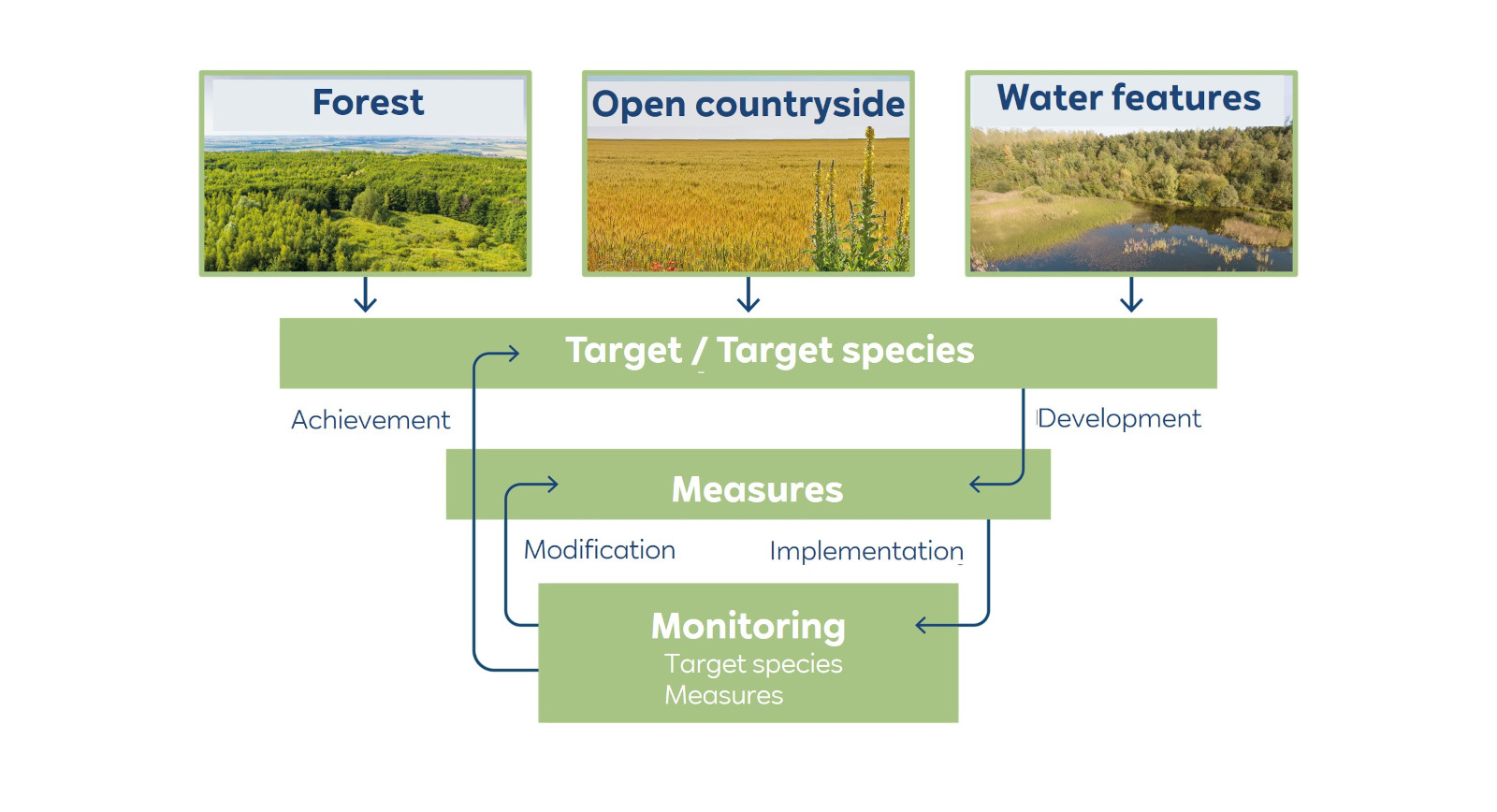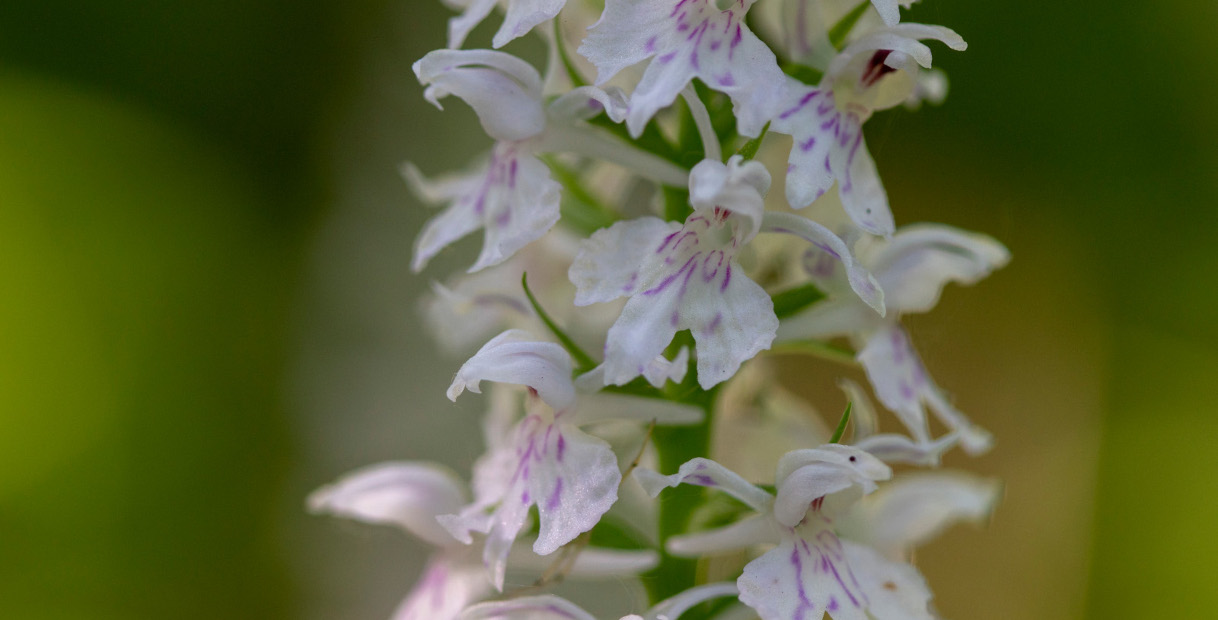A biodiversity strategy for the Rhenish lignite mining area (BioDiS) was devised and introduced by RWE Power AG in 2018 based on the general RWE biodiversity policy of 2015 and the IUCN recommendations. This strategic approach is necessary in order to identify and realise additional opportunities for the voluntary improvement of biodiversity, going beyond the legally mandated abatement of opencast mining impacts on biodiversity. The strategy applies in particular to the active recultivation of the Inden, Hambach and Garzweiler opencast mines and to the Hambach species protection areas. Implementing the RWE biodiversity strategy for the Rhenish lignite mining area (BioDiS) is the responsibility of RWE Power’s Lignite Development division in cooperation with the Recultivation Research Center.

Methodical implementation of BioDiS
Developing and implementing concrete measures to promote biodiversity in the recultivated areas and the species protection areas is the object of the biodiversity strategy’s practical implementation. Measures are derived from the needs of specifically selected target species. These target species represent symbiotic communities that require protection (biocoenoses). They are highly ecologically demanding and thus represent the habitat requirements of numerous other species. Many other animal and plant species make their home in areas where the target species thrives. A significant windfall effect for other organisms is thus obtained through the protection and promotion of target species.
The monitoring of both species and measures is carried out to examine the quality of the measures and the development of the target species. Monitoring results are used to evaluate the effectiveness of measures that were implemented and to make changes as needed. Here we work closely with various regional project partners. The resulting scientific findings are summarised in detailed annual reports and made available to a wide audience through presentations, publications and tours.

The forest field of action is divided into the overall forest area and four different habitats for which corresponding target species or groups have been defined.
The open land field of action is divided into the overall open land area and four different habitats for which corresponding target species or groups have been defined.
The bodies of water field of action is divided into the overall bodies of water area and four different habitats for which corresponding target species or groups have been defined.
Guiding principles
The following ten guiding principles for biodiversity were established for recultivation:
- An effective, functioning ecosystem is restored to ensure that ecosystem services essential for life are provided and that natural assets are available for long-term use.
- Collected data is catalogued, processed and archived for traceability and long-term documentation (biodiversity archive).
- Forest recultivation aims to achieve near-natural forest development with typical symbiotic communities (beech and oak forests in particular). The biodiversity balance between recultivated forests and old-growth forests should be equalised after 100 years.
- Agricultural recultivation aims to develop species-rich fields and meadows with typical symbiotic communities. Biodiversity is significantly increased compared to the surrounding, established agricultural landscape, notably with long-term effects.
- Watercourses and smaller standing bodies of water with natural, diverse symbiotic communities are created in the course of recultivation. Nature conservation is simultaneously prioritised in select areas.
- Biodiversity is promoted in the planning, establishment and filling of the pit lakes.
- A selection is made of priority habitats and species established during recultivation that require protection.
- The priority habitats and species requiring protection are preserved and where possible promoted through appropriate measures.
- Biodiversity is primarily increased in recultivation by promoting natural reestablishment as well as target species.
- A web of areas is developed where natural processes occur undisturbed in their natural dynamics (forest, bodies of water) or as close to natural as possible (fields and meadows, special areas) and are monitored regularly.


